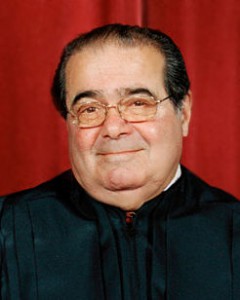Justice Scalia And The Next Supreme Court Justice
In addition to the race for the White House, the death of Antonin Scalia has launched another battle over power, this time in the Supreme Court. The death of Justice Scalia leaves the Court not only with an even number of justices, but evenly divided between liberal and conservative justices.
The Constitution gives President Obama the power to nominate justices to the Court, the Senate then must hold a hearing to vote on the nomination and a majority of 51 votes is needed to confirm the nominee. President Obama nominated Justices Kagan and Sotomayor to the nation’s highest court. However Justice Sotomayor was confirmed in a vote of 68-31 in a Democrat controlled Senate, with the vote being largely along party lines. Justice Kagan was similarly confirmed in a vote of 63-37 also largely along party lines. 
The Republican controlled Senate has already stated that Obama should not name a replacement and should leave it for the next President. Senate Majority Leader Mitch McConnell firmly believes that there should be no confirmation until the next President starts their term, which is not until January 2017. “The American people should have a voice in the selection of their next Supreme Court Justice,” he said in a statement. “Therefore, this vacancy should not be filled until we have a new President.”
Leaving Scalia’s vacancy should not even be considered a possibility because the Court is set to decide on cases involving voting rights, abortion, affirmative action and immigration, all of which are hot button issues for the presidential candidates. White House spokesman Eric Schultz said, “The Constitution does not include exemptions for election years or for the president’s last term in office. There’s no exemptions for when a vacancy could tip the balance of the court.”
The Chairman of the Senate Judiciary Committee, Charles Grassley (R-IA) has stated “that it’s been standard practice over the last nearly 80 years that Supreme Court nominees are not nominated and confirmed during a presidential election year.” However, Grassley’s statement is untrue. Justice Brennan was appointed by President Eisenhower a few weeks before Election Day and President Reagan nominated Justice Kennedy with only a year left to his term.
President Obama has precedence on his side for appointing a new Supreme Court Justice. In fact, it would be unprecedented and unreasonable should the vacancy remain for over a year. What Senator McConnell (R-KY) and other Republicans echoing his sentiments fail to realize is that the American people do have a voice in the selection of the next justice; they had their voices heard in 2012 when they voted Barack Obama for another term.
A vacancy in the current state of the Court, with the equal number of liberal and conservative justices, for the current term would mean that many of the Court’s decisions would end up as a tie. Tie votes would uphold the lower court’s ruling. The next cast to be heard by the justices is set for March 2 and is centered on abortion clinics in Texas challenging a state law that imposes many restrictions on doctors and facilities. Following that case is a case centered on contraception where religious non-profits seek an exemption to the Affordable Care Act’s mandate that employers pay for contraceptives. It is very unlikely that Obama can appoint and have his nominee confirmed by those hearings, and the Court is likely to end in a tie.
It is in the best interest of our country for Senate Republicans to not automatically block any nominee by President Obama because it would not only be unprecedented, it would hold our highest court back from working effectively. The nominee should be confirmed or vetoed based on their own merits, not vetoed simply because they were nominated by Obama.


Comments